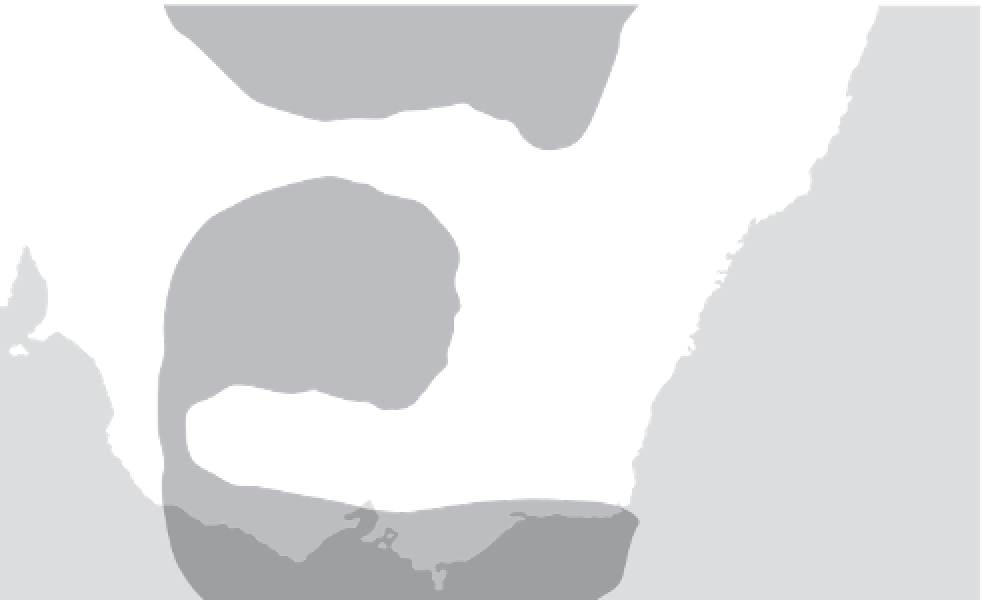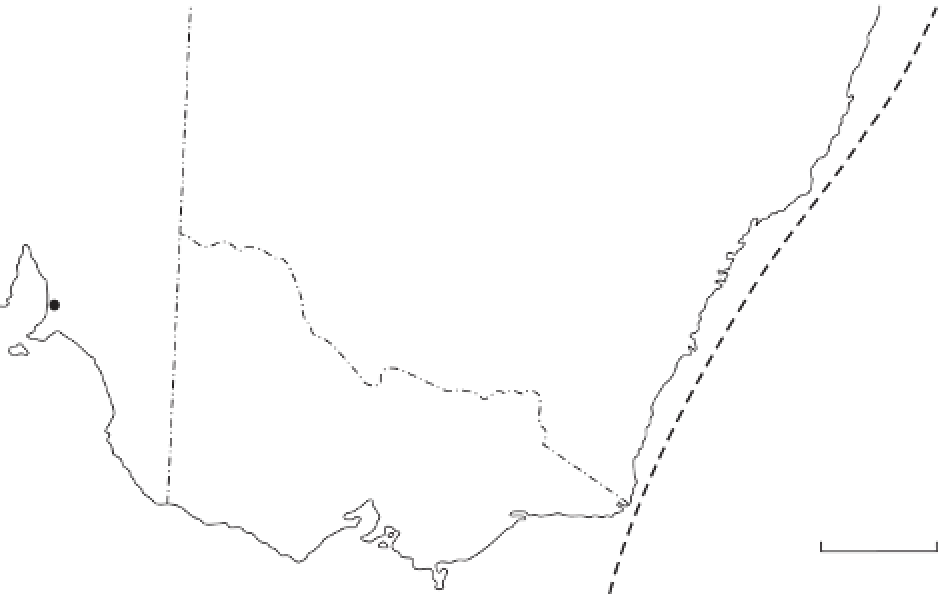Geology Reference
In-Depth Information
of new plate edges and changes of latitude and cli-
mate. It also involved substantial changes in drainage
systems (e.g. Potter 1997; Beard 2003; Goudie 2005).
The landscape evolution of each continental fragment
must be viewed in this very long-term perspective. In
this evolutionary context, the current fads and fashions
of geomorphology - process studies, dynamic equilib-
rium, and cyclical theories - have limited application
(Ollier 1991, 212).
A good example of evolutionary geomorphology is
afforded by tectonics and landscape evolution in south-
east Australia (Ollier and Pain 1994; Ollier 1995).
Morphotectonic evolution in this area appears to rep-
resent a response to unique, non-cyclical events. Today,
the Canobolas and Victoria divides, which are intersected
by the Great Divide and putative Tasman Divide to the
east separate three major basins - the Great Artesian
Basin, the Murray Basin, and the Gibbsland-Otway
basins (Figure 15.13). These divides are major water-
sheds. They evolved in several stages from an initial
Triassic palaeoplain sloping down westwards from the
Tasman Divide (Figure 15.14). First, the palaeoplain was
downwarped towards the present coast, forming an initial
divide. Then the Great Escarpment formed and retreated
westwards, facing the coast. Much of the Great Divide is
at this stage. Retreat of slopes from the coast and from
inland reduced the palaeoplain to isolated high plains,
common on the Victoria Divide. Continued retreat of
the escarpment consumed the high plains and produced
a sharp ridge divide, as is seen along much of the Victoria
Divide. The sequence from low-relief palaeoplain to
knife-edge ridge is the reverse of peneplanation. With
no further tectonic complications, the present topogra-
phy would presumably end up as a new lower-level plain.
However, the first palaeoplain is Triassic in age, and the
'erosion cycle' is unlikely to end given continuing tectonic
changes to interrupt the erosive processes. The morpho-
tectonic history of the area is associated with unique
events. These include the sagging of the Murray Basin,
the opening of the Tasman Sea and creation of a new
Eromanga Basin
SOUTH
AUSTRALI A
N E W
SOUTH
WALE S
Sydney
Murray Basin
Adelaide
V I CTORI A
Melbourne
200 km
Gippsland Basin
Otway Basin
Figure 15.13
Major basins and divides of south-east Australia. The Eromanga Basin is part of the Great Artesian Basin.
Source:
Adapted from Ollier (1994)





